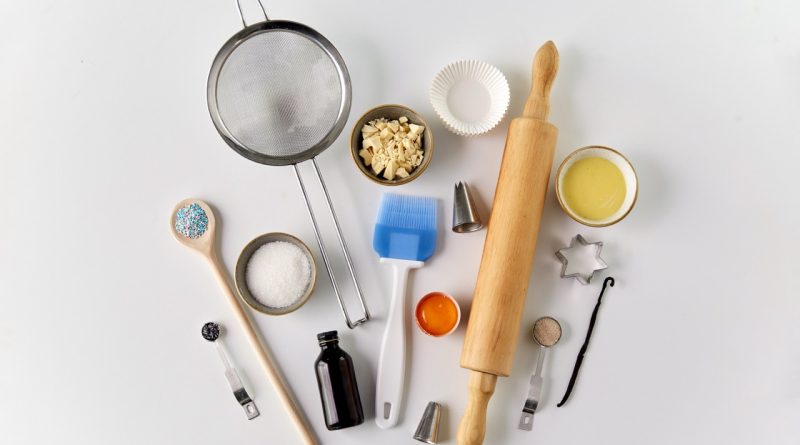The Durability Testing Behind Zwilling Products
In the culinary world, the tools one uses can significantly influence the outcome of a dish. For both professional chefs and home cooks, durability is a key factor in selecting kitchen equipment. Zwilling, a name synonymous with high-quality kitchen products, emphasizes the importance of durability through rigorous testing and superior materials. This article delves into the durability testing behind Zwilling products, examining the methods used, the materials employed, and practical tips for maintaining these essential kitchen tools.
Understanding the Importance of Durability in Kitchen Tools
Durability in kitchen tools goes beyond mere resistance to wear and tear; it encompasses the longevity and reliability of the product under varying conditions. Kitchen tools face frequent exposure to heat, moisture, and mechanical stress, making their durability vital for consistent performance. A durable tool not only enhances cooking efficiency but also ensures safety, as poorly made tools can lead to accidents.
When selecting kitchen equipment, durability is often a key factor for both professional chefs and home cooks. A durable knife, for instance, can withstand rigorous chopping and slicing without losing its sharpness or structural integrity. This reliability allows chefs to focus on their culinary creations rather than worrying about the performance of their tools, ultimately leading to better results in the kitchen.
Moreover, investing in durable kitchen tools can be more economical in the long run. While the initial cost may be higher, the longevity of these items reduces the need for frequent replacements. This is particularly important in an era where sustainability and reducing waste are increasingly important to consumers. Understanding the importance of durability is essential when choosing kitchen tools, and Zwilling excels in this regard.
Zwilling’s Rigorous Testing Methods for Product Reliability
Zwilling employs a comprehensive approach to durability testing, ensuring that their products meet high standards of reliability and performance. Their testing protocols include a variety of methods designed to simulate real-world conditions. These tests involve assessing the impact of temperature changes, exposure to moisture, and mechanical stress to evaluate how well the products hold up over time.
One notable aspect of Zwilling’s testing is the use of advanced technology to monitor the performance of their tools. For example, their knives undergo precision testing where sharpness, edge retention, and balance are meticulously evaluated. This data-driven approach allows Zwilling to make informed decisions about their product designs and materials, ensuring that each item meets their stringent durability criteria.
Additionally, Zwilling collaborates with culinary professionals during the testing phase. Chefs provide valuable feedback on how the products perform in a high-pressure kitchen environment, helping Zwilling refine their designs further. This combination of scientific testing and real-world insights ensures that Zwilling products are not only durable but also practical for everyday use.
Key Materials Used in Zwilling Products and Their Benefits
The materials used in Zwilling products play a crucial role in their durability and overall performance. One of the most important materials is high-carbon stainless steel, which is commonly used in their knives. This type of steel is known for its resistance to corrosion and wear, providing a sharp edge that lasts longer than traditional stainless steel. The addition of carbon enhances the hardness of the blade, making it less prone to bending or breaking under stress.
In addition to high-carbon stainless steel, Zwilling utilizes innovative materials like ceramic and titanium in some of their products. Ceramic coatings can enhance the non-stick properties of cookware, while titanium adds strength and durability to knife blades. These materials not only improve the performance of the tools but also contribute to their long-term longevity, making them ideal for both home cooks and professionals.
Furthermore, Zwilling’s commitment to quality extends to their manufacturing processes. By adhering to strict quality control measures, the company ensures that only the best materials are used in production. Each product undergoes thorough inspection before it reaches the customer, reinforcing Zwilling’s reputation for high-quality, durable kitchen tools.
Tips for Maintaining the Durability of Your Zwilling Items
To ensure the longevity of your Zwilling products, proper maintenance is essential. For knives, regular honing and sharpening are crucial. Honing helps maintain the edge, while professional sharpening should be done periodically to restore its sharpness. Avoid using your knives on hard surfaces like glass or stone, as this can damage the blade and affect its performance.
For cookware, it’s important to follow the manufacturer’s instructions regarding heat levels and cleaning methods. Many Zwilling pots and pans are designed for high-heat cooking, but using excessively high temperatures can warp the material over time. Additionally, avoid using metal utensils on non-stick surfaces to prevent scratches and prolong the life of your cookware.
Finally, storing your Zwilling products properly can greatly enhance their durability. Use knife blocks, magnetic strips, or sheaths to protect your knives from damage. For cookware, stacking items carefully and using protective liners can help prevent scratches and dents. By following these tips, you can maintain the quality and longevity of your Zwilling products, ensuring they remain reliable tools in your kitchen for years to come.
Durability is a fundamental aspect of kitchen tools, and Zwilling stands out for its commitment to quality and reliability. Through rigorous testing and the use of high-quality materials, Zwilling products are designed to withstand the rigors of daily use. By understanding the importance of durability, familiarizing yourself with Zwilling’s testing methods, and following maintenance tips, you can ensure that your kitchen tools remain effective and reliable for many culinary adventures ahead. Investing in durable kitchen equipment is not just about performance; it’s about enhancing your cooking experience while making a sustainable choice.
